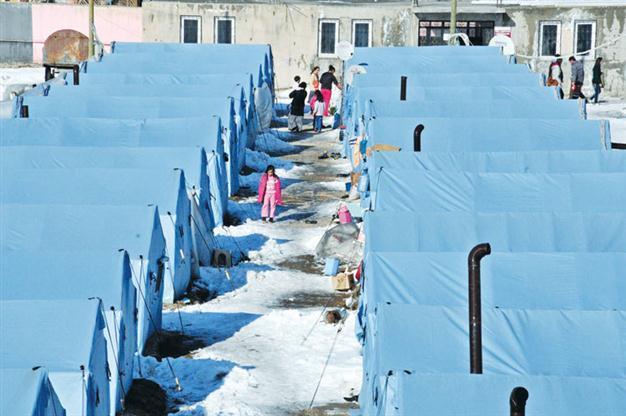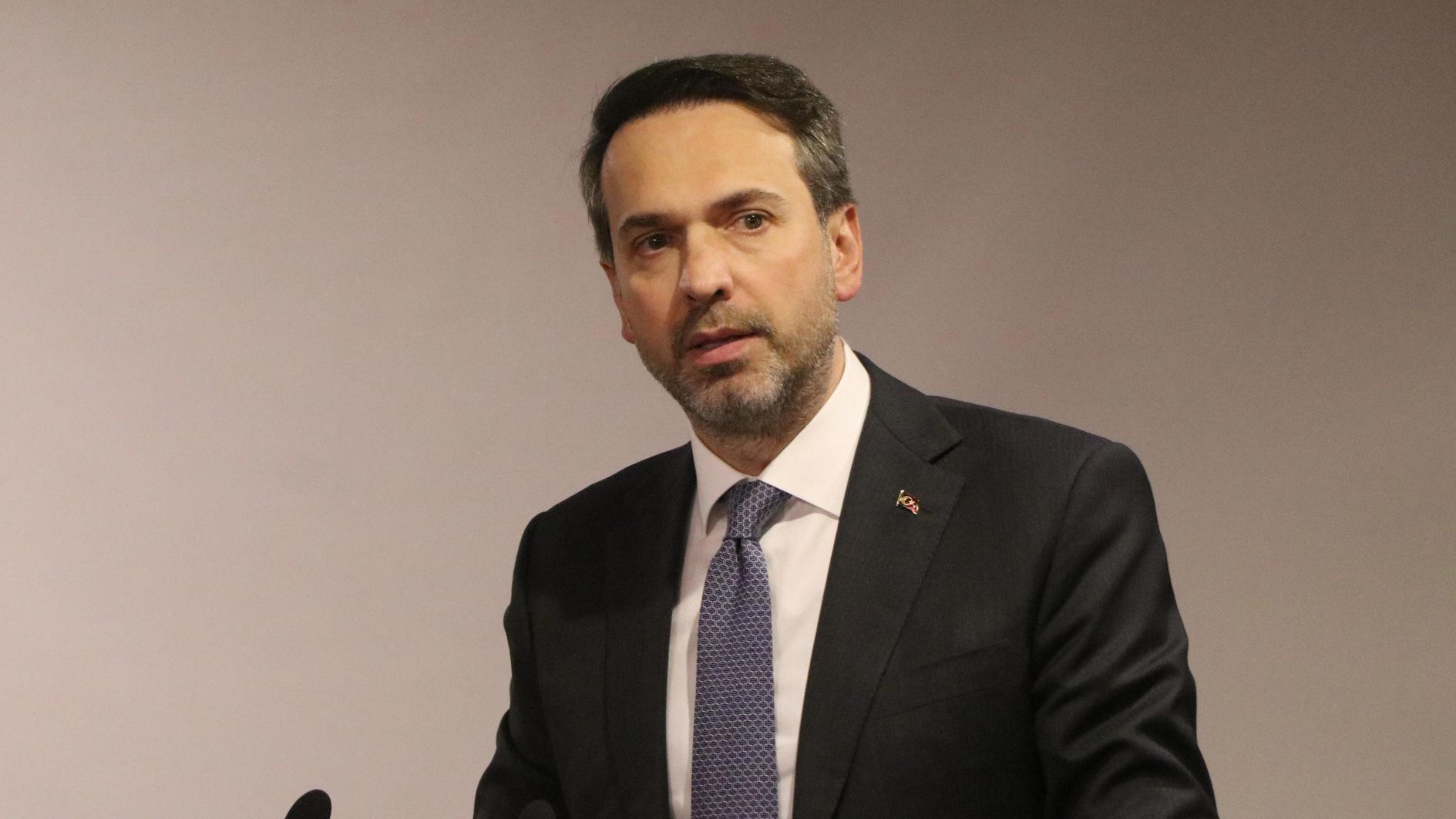Van quake lessons help shape risk management
Ömür Ürer-Onur Orhan Düzce/Anatolia News Agency

More than 7,000 people still leave in tents in Van, which was hit by two earthquakes last Ocotber. DHA photo
Turkey’s disaster and risk management is being reviewed in the wake of lessons drawn from the latest Van earthquake in October 2011, Deputy Prime Minister Beşir Atalay said while visiting the northwestern province Düzce, the scene of a major earthquake in 1999.Governors from all 81 provinces met in Ankara two days earlier, Atalay said, to try to find answers to questions such as, How can we respond faster after a disaster? How can we be more organized? How can we speed up search and rescue?
The deputy prime minister said the state responded swiftly and in an organized way after the Van earthquake. Turkey is located on a major seismic belt and it needs to face the reality of earthquakes, Atalay said.
The state learned major lessons from previous earthquakes, he said. “During the Marmara earthquake, and right afterwards the Düzce earthquake, we went through massive problems. Especially because the area hit was vast and communications were down, the state could not move fast. At that time, citizens helping each other and aid from associations and foundations were ahead of the state.”
‘The state was fas and organized in Van’
Now, in the Van earthquake, citizens poured aid to Van, demonstrating strong sensitivity, Atalay said. “This was a proof of brotherhood. But also, our state was fast and organized in Van. One hour after the tremor, we held a coordination meeting. We were in Van in three hours. All of the resources of the state were mobilized. Today, Turkey is stronger and richer with wider resources. We did not have any financial shortages in Van. We have spent 800 million Turkish Liras in Van up to now and we still have money.”
The delays in Van were due to transportation-related issues such as “loading of goods to trucks and moving them to Van,” he said.
After the 1999 earthquake in Düzce, significant investment incentives were introduced, Atalay said. This move brought along serious industrialization, and “land became scarce for building new industry facilities.”
According to Atalay, incentives caused prosperity in Düzce. “Today Düzce is one of the significant provinces in terms of industrialization. Our new system on incentives is strengthening. Some sectors, some areas need more incentive. In Düzce, some sectors will receive more support. The university is doing extremely well here. More planned and sector-based incentives are important in terms of exports and imports. This dimension will be highlighted in the government’s future plans.”
Rescue efforts appreciated
VAN – Doğan News Agency
The public believes the search and rescue operations in the quake-hit eastern province of Van have been successful, however efforts to provide decent accommodation to the quake victims have failed, according to a recent survey.
The survey has been led by Prof. Mustafa Sarı during his volunteer work at the Disaster Coordination Center following the earthquakes that hit the city. Sarı said he asked people all around the country follow the stories about Van on the media and grade the relief efforts according to their perceptions. “The public perception is that there are major problems in distributing the supplies and providing accommodation to the victims,” Sarı told the Doğan news agency. “However, the public believe that the search and rescue efforts were successful, that means we were not able to inform the public about other efforts here.”
















